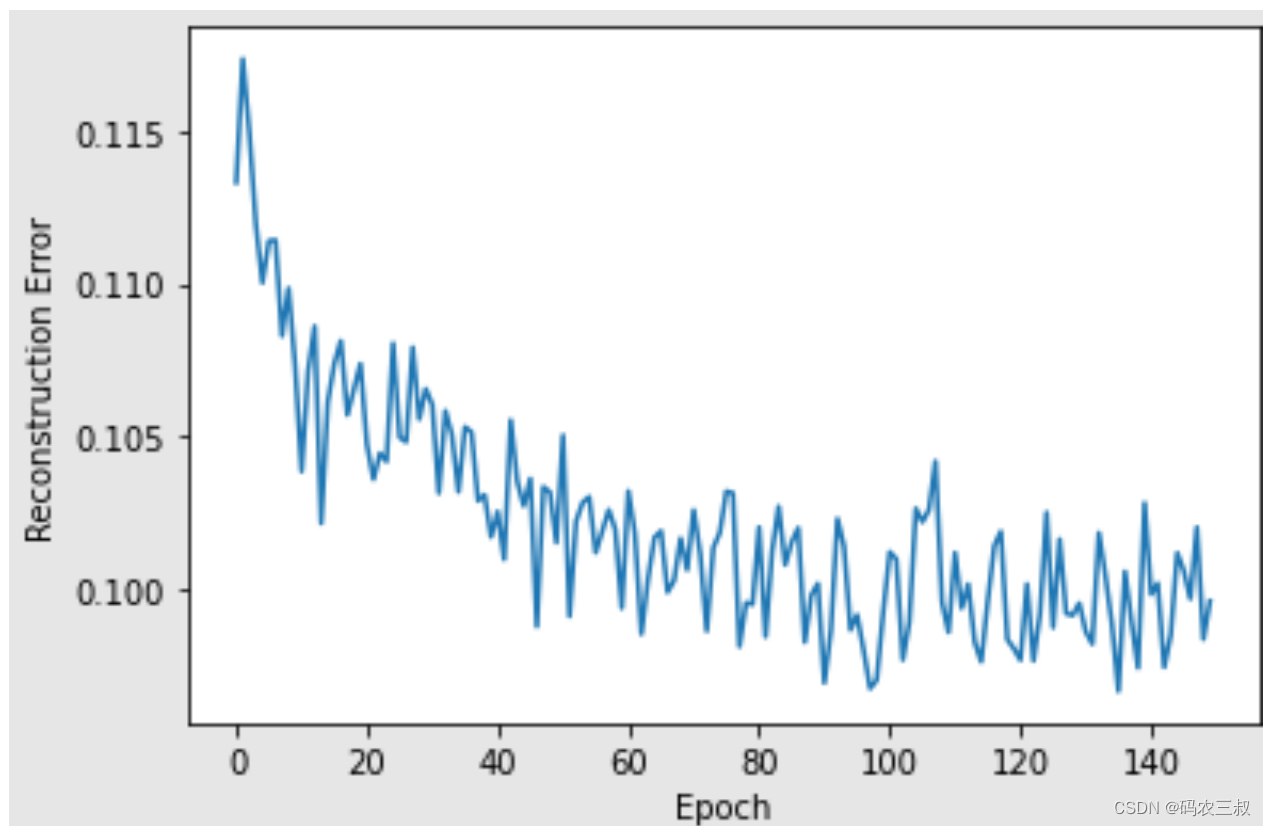

10.2 深度信念网络应用实战:程序缺陷预测
经过本章前面内容的学习,已经基本了解了深度信念网络的基础知识。在本节的内容中,将通过具体实例的实现过程,详细讲解在在TensorFlow中使用深度信念网络的方法。本实例的功能是,使用 DBN 模型分别进行ANN、LogisticRegression、GaussianNB 和 RandomForestClassifier 的训练和集成,用于在有缺陷的代码和干净的代码之间进行分类。本项目程程序保存在ipynb文件中,将在谷歌的Colaboratory中调试运行。
10.2.1 使用DBN模型进行ANN处理
ANN是人工神经网络(Artificial Neural Network)的简称,是指由大量的处理单元(神经元) 互相连接而形成的复杂网络结构,是对人脑组织结构和运行机制的某种抽象、简化和模拟。以数学模型模拟神经元活动,是基于模仿大脑神经网络结构和功能而建立的一种信息处理系统。编写文件JustInTime_SW_Pred_v1.ipynb使用DBN模型进行ANN处理,具体实现流程如下:
(1)导入谷歌的库colab,查看驱动器的位置,代码如下:
from google.colab import drive
drive.mount('/content/drive/')执行后会输出:
Drive already mounted at /content/drive/; to attempt to forcibly remount, call drive.mount("/content/drive/", force_remount=True).(2)导入需要用到的库,代码如下:
import tensorflow as tf
import sklearn.metrics
from sklearn.metrics import log_loss, accuracy_score
import numpy as np
import pandas as pd
import matplotlib.pyplot as plt(3)导入CSV文件,并获取文件中的数据数目,代码如下:
df= pd.read_csv('/content/drive/My Drive/dataset/bugzilla.csv')
def normalize(x):
x = x.astype(float)
min = np.min(x)
max = np.max(x)
return (x - min)/(max-min)
def view_values(X, y, example):
label = y.loc[example]
image = X.loc[example,:].values.reshape([-1,1])
print(image)
print("Shape of dataframe: ", df.shape) #train执行后会输出:
Shape of dataframe: (4620, 17)(4)查看前5行数据中的信息,代码如下:
df.head()执行后会输出:
class RBM(object):
def __init__(self, input_size, output_size,
learning_rate, epochs, batchsize):
#定义超参数
self._input_size = input_size
self._output_size = output_size
self.learning_rate = learning_rate
self.epochs = epochs
self.batchsize = batchsize
#使用零矩阵初始化权重和偏差
self.w = np.zeros([input_size, output_size], dtype=np.float32)
self.hb = np.zeros([output_size], dtype=np.float32)
self.vb = np.zeros([input_size], dtype=np.float32)(5)创建受限玻尔兹曼机类RBM,然后定义需要的超参数,代码如下:
#向前传递
def prob_h_given_v(self, visible, w, hb):
return tf.nn.sigmoid(tf.matmul(visible, w) + hb)
#向后传递
def prob_v_given_h(self, hidden, w, vb):
return tf.nn.sigmoid(tf.matmul(hidden, tf.transpose(w)) + vb)
#采样函数
def sample_prob(self, probs):
return tf.nn.relu(tf.sign(probs - tf.random_uniform(tf.shape(probs))))(6)分别创建向前传递函数、向后传递函数和采样函数,其中h为隐藏层,v为可见层。代码如下:
#向前传递
def prob_h_given_v(self, visible, w, hb):
return tf.nn.sigmoid(tf.matmul(visible, w) + hb)
#向后传递
def prob_v_given_h(self, hidden, w, vb):
return tf.nn.sigmoid(tf.matmul(hidden, tf.transpose(w)) + vb)
#采样函数
def sample_prob(self, probs):
return tf.nn.relu(tf.sign(probs - tf.random_uniform(tf.shape(probs))))
(7)创建训练函数train(),为了在训练时更新权重,我们设置执行收缩发散功能,并将误差定义为MSE(均方误差)。代码如下:
def train(self, X):
_w = tf.placeholder(tf.float32, [self._input_size, self._output_size])
_hb = tf.placeholder(tf.float32, [self._output_size])
_vb = tf.placeholder(tf.float32, [self._input_size])
prv_w = np.zeros([self._input_size, self._output_size], dtype=np.float32)
prv_hb = np.zeros([self._output_size], dtype=np.float32)
prv_vb = np.zeros([self._input_size], dtype=np.float32)
cur_w = np.zeros([self._input_size, self._output_size], dtype=np.float32)
cur_hb = np.zeros([self._output_size], dtype=np.float32)
cur_vb = np.zeros([self._input_size], dtype=np.float32)
v0 = tf.placeholder(tf.float32, [None, self._input_size])
h0 = self.sample_prob(self.prob_h_given_v(v0, _w, _hb))
v1 = self.sample_prob(self.prob_v_given_h(h0, _w, _vb))
h1 = self.prob_h_given_v(v1, _w, _hb)
positive_grad = tf.matmul(tf.transpose(v0), h0)
negative_grad = tf.matmul(tf.transpose(v1), h1)
update_w = _w + self.learning_rate * (positive_grad - negative_grad) / tf.to_float(tf.shape(v0)[0])
update_vb = _vb + self.learning_rate * tf.reduce_mean(v0 - v1, 0)
update_hb = _hb + self.learning_rate * tf.reduce_mean(h0 - h1, 0)
#还将误差定义为MSE
err = tf.reduce_mean(tf.square(v0 - v1))
error_list = []
with tf.Session() as sess:
sess.run(tf.global_variables_initializer())
for epoch in range(self.epochs):
for start, end in zip(range(0, len(X), self.batchsize),range(self.batchsize,len(X), self.batchsize)):
batch = X[start:end]
cur_w = sess.run(update_w, feed_dict={v0: batch, _w: prv_w, _hb: prv_hb, _vb: prv_vb})
cur_hb = sess.run(update_hb, feed_dict={v0: batch, _w: prv_w, _hb: prv_hb, _vb: prv_vb})
cur_vb = sess.run(update_vb, feed_dict={v0: batch, _w: prv_w, _hb: prv_hb, _vb: prv_vb})
prv_w = cur_w
prv_hb = cur_hb
prv_vb = cur_vb
error = sess.run(err, feed_dict={v0: X, _w: cur_w, _vb: cur_vb, _hb: cur_hb})
print ('Epoch: %d' % epoch,'reconstruction error: %f' % error)
error_list.append(error)
self.w = prv_w
self.hb = prv_hb
self.vb = prv_vb
return error_list(8)编写函数rbm_output(),功能是从RBM已学习的生成模型生成新特征。代码如下:
def rbm_output(self, X):
input_X = tf.constant(X)
_w = tf.constant(self.w)
_hb = tf.constant(self.hb)
_vb = tf.constant(self.vb)
out = tf.nn.sigmoid(tf.matmul(input_X, _w) + _hb)
hiddenGen = self.sample_prob(self.prob_h_given_v(input_X, _w, _hb))
visibleGen = self.sample_prob(self.prob_v_given_h(hiddenGen, _w, _vb))
with tf.Session() as sess:
sess.run(tf.global_variables_initializer())
return sess.run(out), sess.run(visibleGen), sess.run(hiddenGen)(9)开始进行训练,为了实现更平衡的数据帧,使用函数drop()删除不必要的字符串列。代码如下:
deleted = 0
for i in range(0, df.shape[0]-1):
if deleted == 1230:
break
elif df.iloc[i].bug == 0:
df = df.drop(df.index[i])
deleted = deleted + 1
#删除不必要的字符串列
df = df.drop(['commitdate','transactionid'], axis=1)
#分割df
train_X = df.iloc[:,:-1].apply(func=normalize, axis=0)
train_Y = df.iloc[:,-1]
# df=df.drop(['transactionid'], axis=1)
print(df.head())执行后会输出:
ns nm nf entropy la ... npt exp rexp sexp bug
0 1 1 3 0.579380 0.093620 ... 0.666667 143 133.50 129 1
1 1 1 1 0.000000 0.000000 ... 1.000000 140 140.00 137 1
3 1 1 8 0.685328 0.016039 ... 1.000000 579 479.25 550 0
5 1 1 16 0.760777 0.018308 ... 0.750000 595 495.25 566 0
7 2 2 33 0.816160 0.095682 ... 0.727273 482 382.25 474 0
[5 rows x 15 columns](10)在训练时设置限制玻尔兹曼机的参数,代码如下:
import tensorflow.compat.v1 as tf
tf.disable_v2_behavior()
outputList = []
error_list = []
#遍历每个RBM输入输出列表
for i in range(0, len(rbm_list)):
print('RBM', i+1)
#训练新的RBM
rbm = rbm_list[i]
err = rbm.train(inputX)
error_list.append(err)
#返回输出层
#sess.run(out), sess.run(visibleGen), sess.run(hiddenGen)
outputX, reconstructedX, hiddenX = rbm.rbm_output(inputX)
outputList.append(outputX)
inputX= hiddenX执行后会输出:
deprecated and will be removed in a future version.
Instructions for updating:
Use `tf.cast` instead.
Epoch: 0 reconstruction error: 0.113313
Epoch: 1 reconstruction error: 0.117359
Epoch: 2 reconstruction error: 0.114953
Epoch: 3 reconstruction error: 0.111951
Epoch: 4 reconstruction error: 0.110032
Epoch: 5 reconstruction error: 0.111399
Epoch: 6 reconstruction error: 0.111426
Epoch: 7 reconstruction error: 0.108291
Epoch: 8 reconstruction error: 0.109852
Epoch: 9 reconstruction error: 0.107341
Epoch: 10 reconstruction error: 0.103858
Epoch: 11 reconstruction error: 0.107152
Epoch: 12 reconstruction error: 0.108607
Epoch: 13 reconstruction error: 0.102160
Epoch: 14 reconstruction error: 0.106119
Epoch: 15 reconstruction error: 0.107382
Epoch: 16 reconstruction error: 0.108130
......
Epoch: 145 reconstruction error: 0.125590
Epoch: 146 reconstruction error: 0.122321
Epoch: 147 reconstruction error: 0.125713
Epoch: 148 reconstruction error: 0.127262
Epoch: 149 reconstruction error: 0.123992(12)使用for循环遍历上面的每个RBM输入输出列表,并循环绘制重建误差和RBM的可视化图,代码如下:
i = 1
for err in error_list:
print("RBM",i)
pd.Series(err).plot(logy=False)
plt.xlabel("Epoch")
plt.ylabel("Reconstruction Error")
plt.show()
i += 1执行效果如图10-6所示。



图10-6 可视化图
























 301
301











 被折叠的 条评论
为什么被折叠?
被折叠的 条评论
为什么被折叠?










